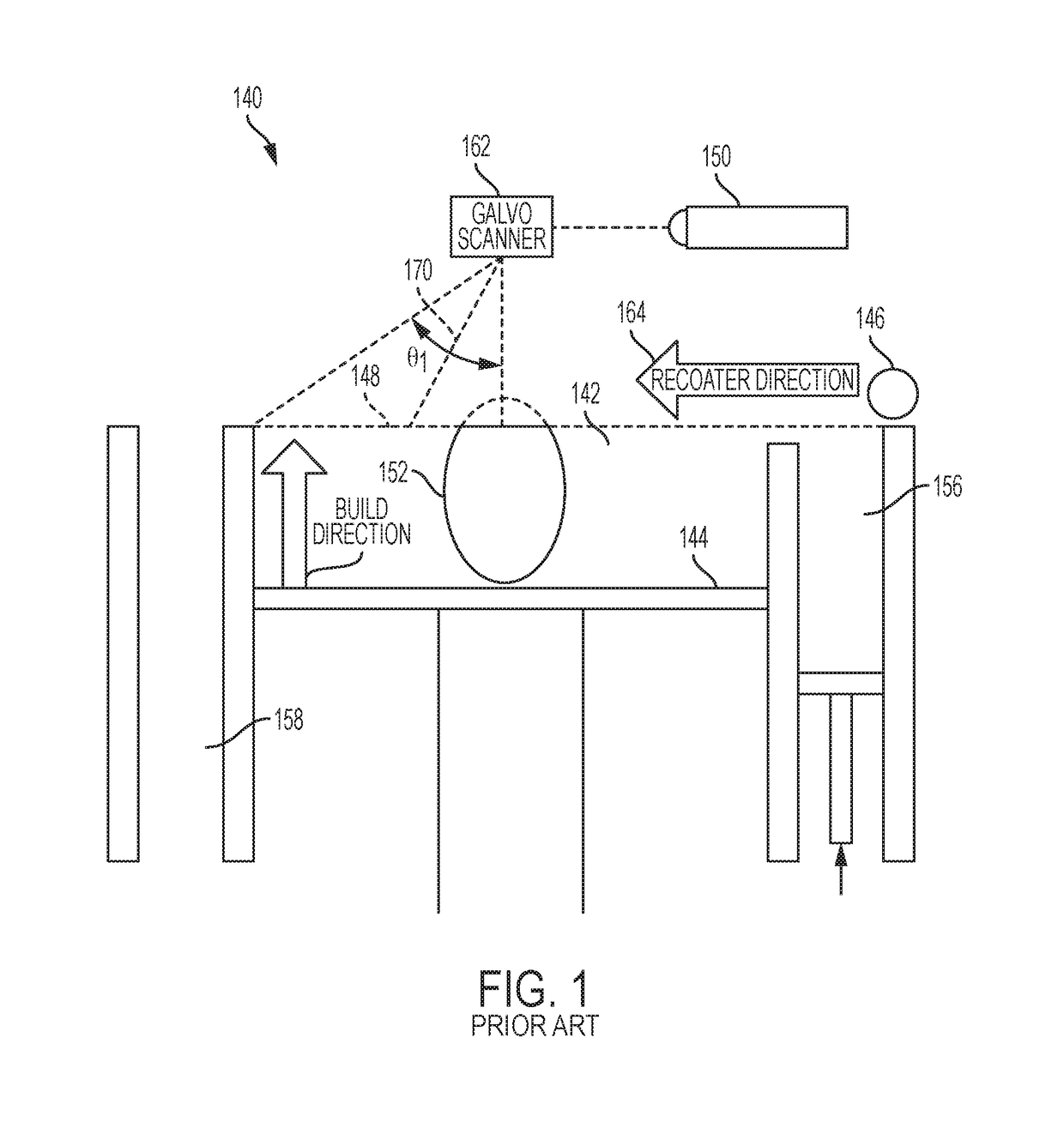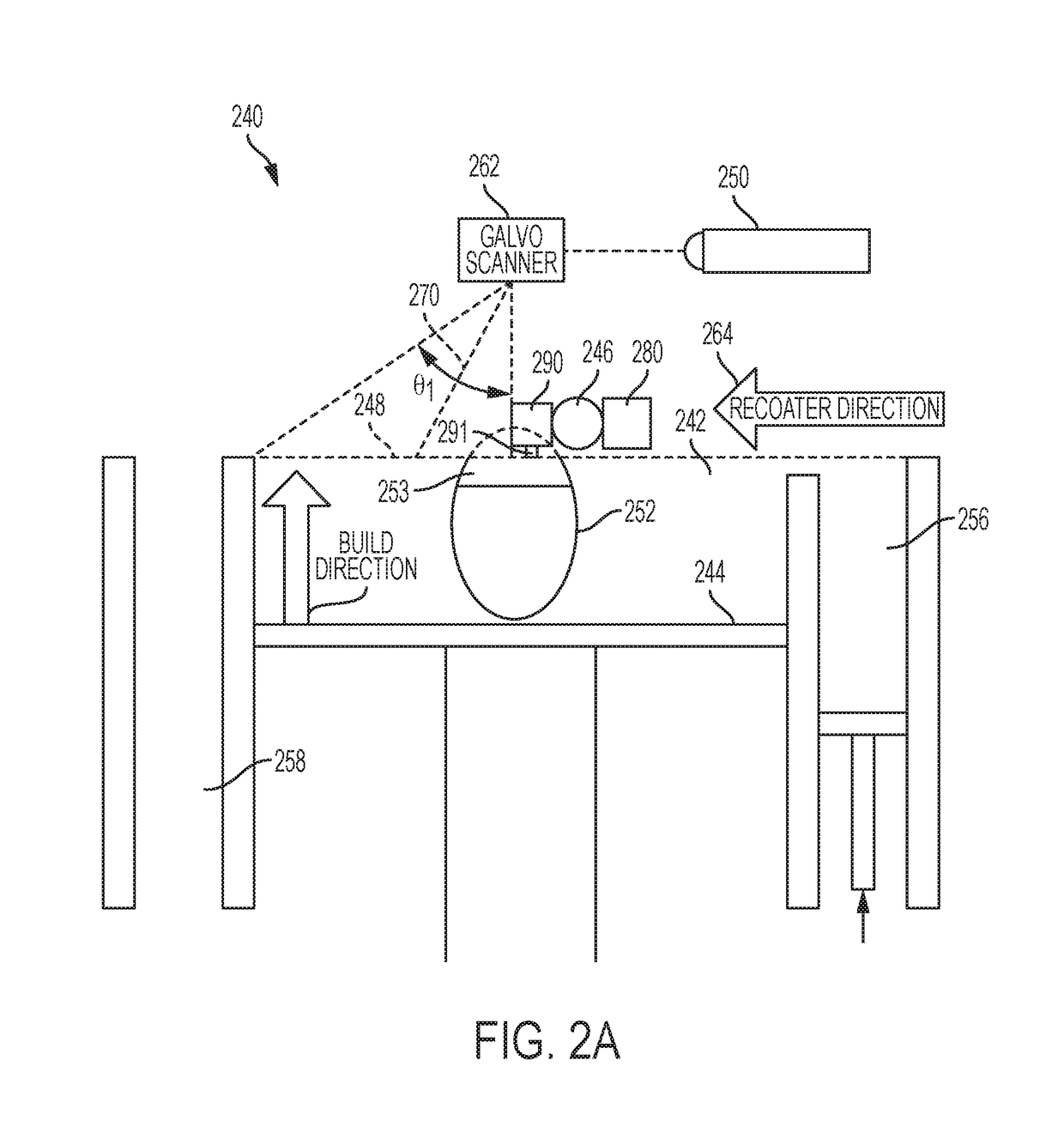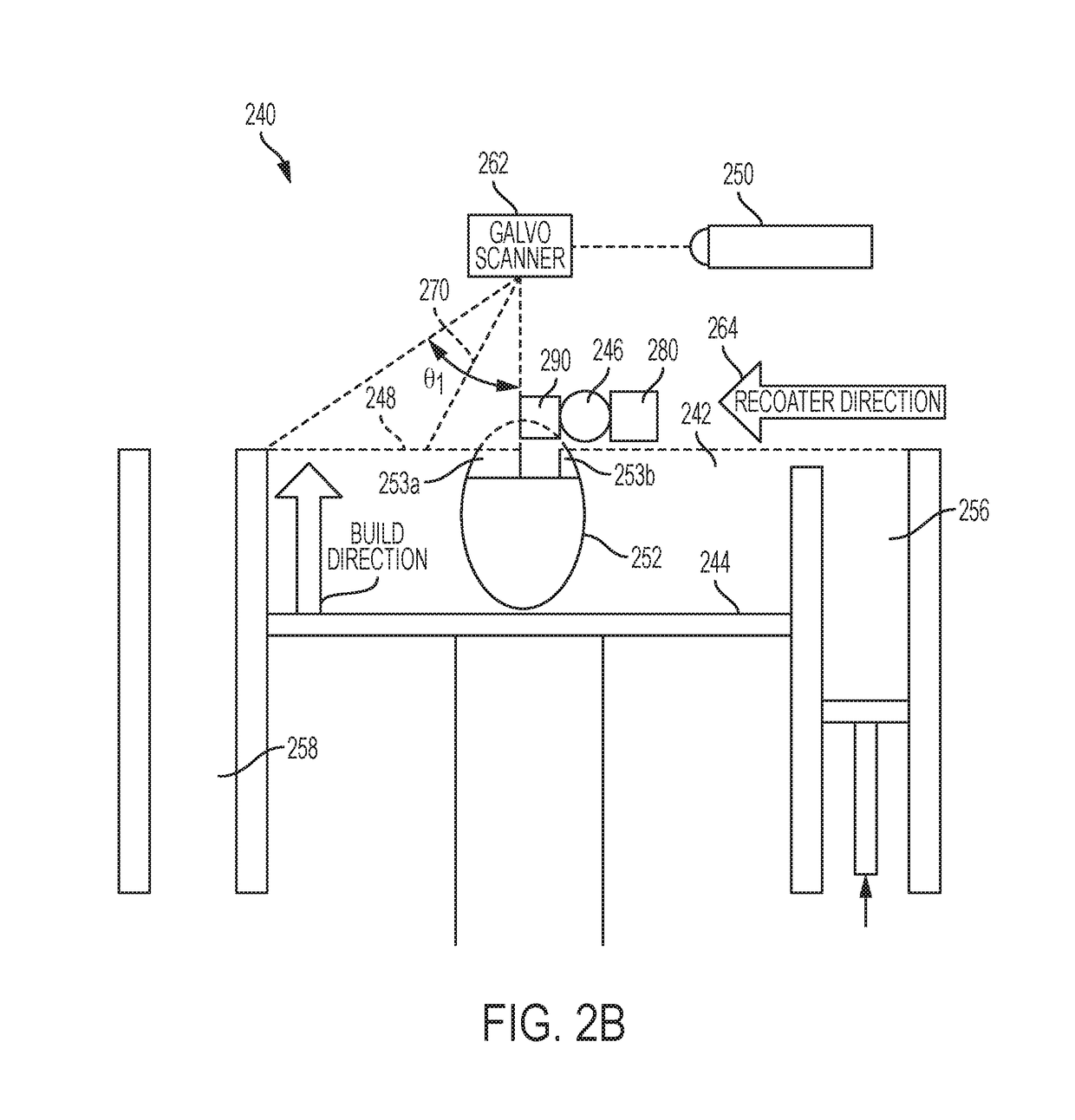Selective powder processing during powder bed additive manufacturing
- Summary
- Abstract
- Description
- Claims
- Application Information
AI Technical Summary
Benefits of technology
Problems solved by technology
Method used
Image
Examples
second embodiment
[0072]FIG. 3F shows a close-up view of dispenser unit 280 according to the present disclosure. The dispenser unit 280 shown in FIG. 3F may have identical features to that shown in FIG. 2F. All aspects described with respect to dispenser unit 280 attached to recoater arm 246 (FIG. 2F) apply with equal force to dispenser unit 280 attached to positioning unit 283 (FIG. 3F). The additional vertical movement provided in this embodiment is useful in systems with lowering build plates (e.g., as shown in FIG. 1), as well as in systems with a stationary build plate, including, but not limited to, those described in:
[0073]U.S. patent application Ser. No. 15 / 406,467, titled “Additive Manufacturing Using a Mobile Build Volume,” with attorney docket number 037216.00059, and filed Jan. 13, 2017.
[0074]U.S. patent application Ser. No. 15 / 406,454, titled “Additive Manufacturing Using a Mobile Scan Area,” with attorney docket number 037216.00060, and filed Jan. 13, 2017.
[0075]U.S. patent application ...
third embodiment
[0095]In a third embodiment, the vacuum unit 290 is attached to a positioning unit 283. The positioning unit may be a motorized robotic arm, e.g. robotic arm 283 of FIG. 4A, separate from the recoater arm 246, and positioning unit 283 is preferably computer-controlled. In an alternative embodiment, the positioning unit 283 may be a gantry, e.g. a X-Y-Z gantry, whereby a plurality of rails or crossbeams, drive belts, drive screws and / or a Cartesian gantry may be utilized to position the vacuum unit 290 close to the powder bed 242. In yet further alternative embodiments, the positioning unit 283 may be a delta robot, a cable robot, a belt drive, or the like. In certain embodiments, vacuum unit 290 attached to a positioning unit 283 may be used in conjunction with other apparatuses and methods for additive manufacturing using multiple build materials, including, but not limited to, methods of making cast components, such as those described in U.S. patent application Ser. No. 15 / 056,703...
PUM
| Property | Measurement | Unit |
|---|---|---|
| Dimension | aaaaa | aaaaa |
| Energy | aaaaa | aaaaa |
| Reflection | aaaaa | aaaaa |
Abstract
Description
Claims
Application Information
 Login to View More
Login to View More - R&D
- Intellectual Property
- Life Sciences
- Materials
- Tech Scout
- Unparalleled Data Quality
- Higher Quality Content
- 60% Fewer Hallucinations
Browse by: Latest US Patents, China's latest patents, Technical Efficacy Thesaurus, Application Domain, Technology Topic, Popular Technical Reports.
© 2025 PatSnap. All rights reserved.Legal|Privacy policy|Modern Slavery Act Transparency Statement|Sitemap|About US| Contact US: help@patsnap.com



